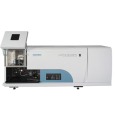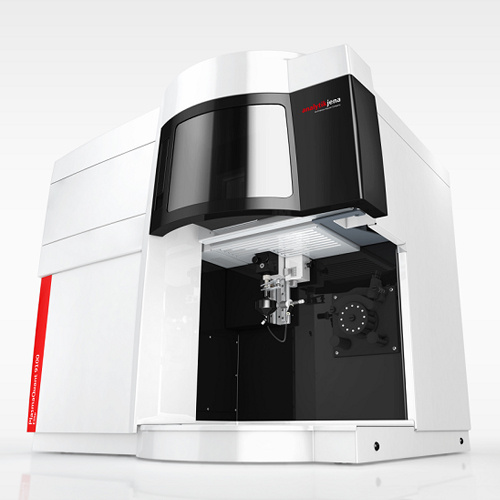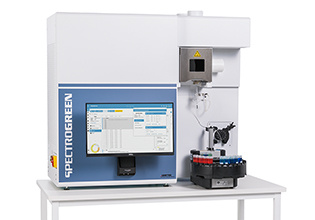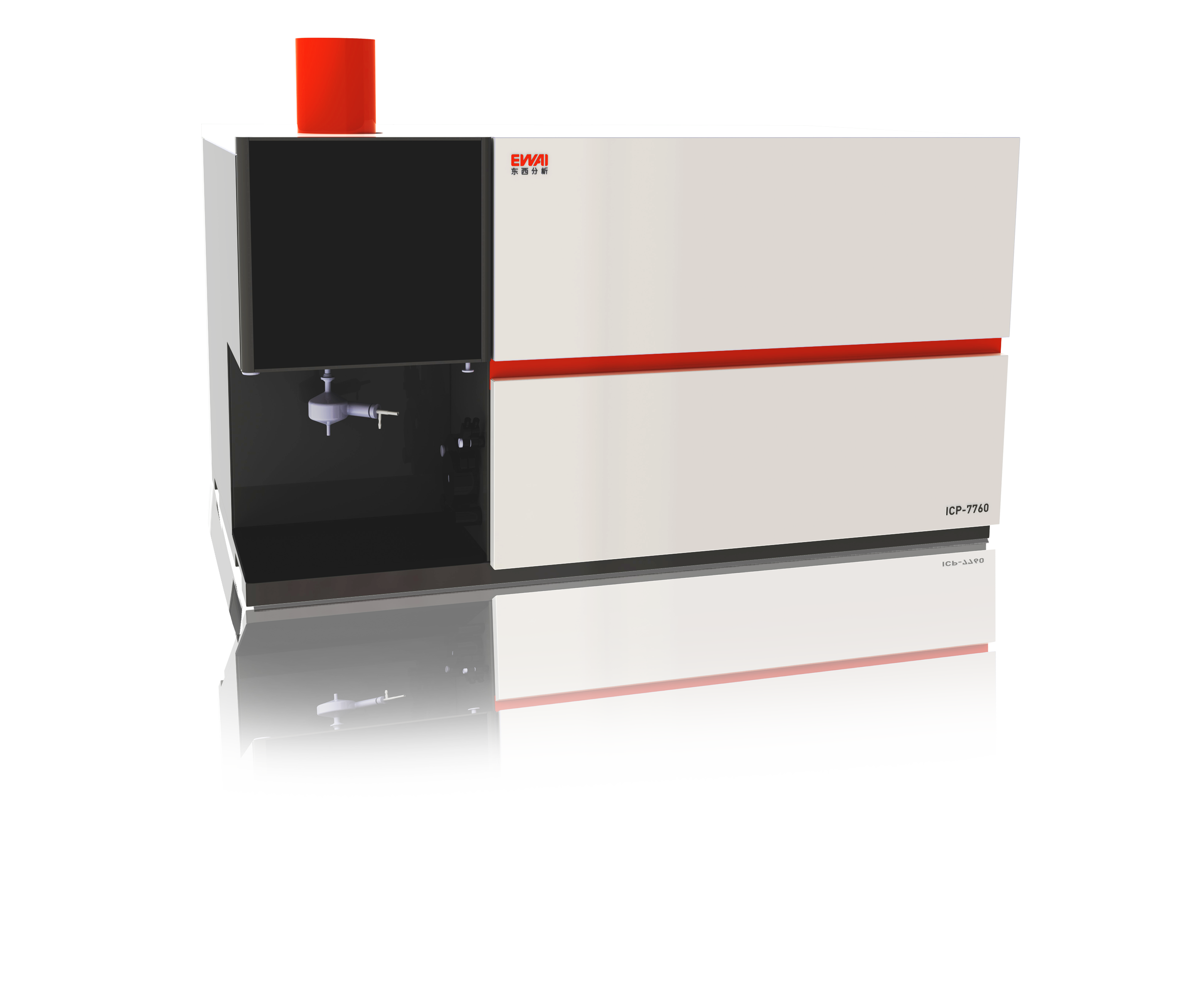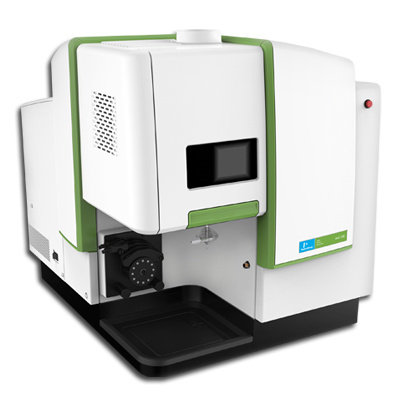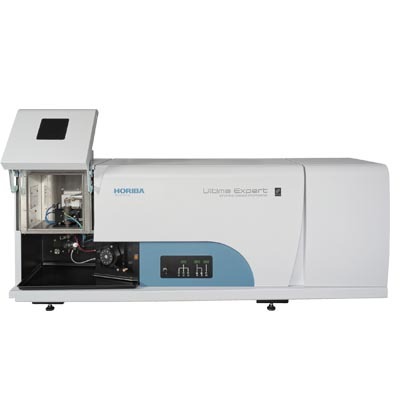
方案详情
文
It is particularly interesting to point out that HORIBA Scientific ICPs have the ability to analyze any type of sample for example, cements, where there is a high salt content due to alkali fusion. The advantage of the ULTIMA 2C is to simultaneously measure the major and trace elements with very high precision. It also enables you to measure an internal standard at the same time and with the same optics for all major elements, improving the repeatability and accuracy for these elements. The use of the sheath gas device originally patented by JY, enables analysis without clogging of the injector tube and to be able to run samples up to 300 g/L salt content. Given the above criteria, ICP emission spectrometry is suitable for analysis of the major and minor elements in cement.
方案详情

ICP ATOMIC EMISSION SPECTROSCOPYAPPLICATION NOTE 30 Analysis of the Major Elements in Cement by ICP Nathalie Le CorreHORIBA Scientific Longjumeau, France Keywords: cement 1 Introduction Chemical analysis of cement is an interestingapplication for ICP spectrometry. The cementindustry requires analysis of major elements at% levels to very high accuracy and precision,including Si, Ca, Al, Fe and S and also minor ele-ments such as Na, K, Ti, Mg, P, Mn. The traceelements are also very important for environ-mental pollution control, this includes specieslike Cr, Pn, Zn, Ni, As, Cd, Vand Cu at ppm lev-els. All these elements are possible by the ICPtechnique. The use of a combined ICP-AES,such as the ULTIMA 2C, enables fast analysis ofall above mentioned elements. For major ele-ments, the repeatability required is in the range0.2 to 0.5%, for this reason the simultaneouscomponent is often used for routine analysis,whereas trace elements are better done on thesequential portion for the superior detectionlimits. 2 Principle 2.1 Technique used The elemental analysis of solutions was under-taken by Inductively Coupled Plasma AtomicEmission Spectrometry (ICP-AES). The sampleis nebulized then transferred to an argon plas-ma. It is decomposed, atomized and ionizedwhereby the atoms and ions are excited. Wemeasure the intensity of the light emitted whenthe atoms or ions return to lower levels of ener-gy. Each element emits light at characteristicwavelengths and these lines can be used forquantitative analysis after a calibration. 2.2 Wavelength choice The choice of the wavelength in a given matrixcan be made using the "profile"function, or byusing Win-IMAGE, which is rapid semi-quantita-tive analysis mode using multiple wavelengths.The principle is the same in either case: recordthe scans of analytes at low concentration, andof the matrix. By superimposing the spectra, wesee possible interferences. 3 Sample Preparation 3.1 Classical digestion 0.1g of sample is fused at 1,000 ℃ with 1 g oflithium tetraborate for about 30 minutes. Thefusion residue is then dissolved with 5 %HCIand made up to a volume of 500 mL. 3.2 Microwave digestion 0.1 g of cement is weighed and 2.5 mL of con-centrated HNO3, 2.5 ml HBF4 and 0.5 ml con-centrated HCL are added to the sample. Thedigestion program is 5 minutes at 25 % powerand then 5 minutes at 50 % power. The residueis dissolved in 5 % HCl and brought up to a vol-ume of 500 mL. 4.Instrument specification The work was done on a ULTIMA 2C.The specifi-cations of this instrument are listed below inTables 1 and 2. Table 1: Specification of spectrometer Parameters Monochromator Polychromator Mounting Czerny-Turner Paschen-Runge Focal length 1 m 0.5 m Grating number 2 400 gr/mm 3 600 gr/mm of grooves working in 2 orders Variable resolution Yes No Table 2: Specification of RF Generator Parameters Specifications Observation Radial Frequency 40.68 MHz Control of gas flowrate By computer Control of pump flow By computer Cooling Air 5 Operating conditions The operating conditions are listed in Table 3below. Table 3: Operating conditions Parameter Condition RF Generatorpower 1200 W Plasma gas flowrate 14 L/min Auxiliary gas flowrate 0.8 L/min Sheath gas flowrate 0.3 L/min Nebulizer flowrate 2.51 bars Sample uptake 0.8 mL/min Type of nebulizer JY 0.7 Type of spray chamber Scott Argon humidifier No Injector tube diameter 3.0 mm 6 Wavelength selection and analyti-cal conditions All the lines were measured with the direct peak-ing mode. The integration time was 2s for the ele-ments analyzed with the monochromator, and 10 s for the polychromator elements. Table 4: Wavelength selection and analytical con-ditions Element Wavelength Al 308.215 As 189.042 Ca 317.215 Cd 228.802 Cr 267.716 Fe 259.940 Mg 279.079 Mn 257.610 Na 589.592 Ni 231.604 Pb 220.353 180.676 Si 251.611 TI 190.864 Ti 337.280 V 292.402 Zn 213.856 7 Results 7.1 Standard preparation The standards were prepared like the samples. Formajor elements, it is suggested to take at least 4certified materials. For trace elements, 2 standardsare enough. The choice of the standards willdepend on the concentration ranges of the sam-ples. For Ca, Si, Fe and Al an internal standard (Li)is required to compensate for the matrix differ-ences. 7.2 Analysis of 3 cements on the mono-chromator The cements were measured three times andreported in the table below, with the concentra-tions expressed in %. The results are presented inTable 5. 7.3 Analysis of 3cements on the poly-chromator The accuracy with the polychromator was as goodas for the monochromator, but the precision andrepeatability was much better. The results are pre-sented in Table 6. Element 8889 9090 9191 Conc RSD Certified Conc RSD Certified Conc RSD Certified % % % % % % % SO3 2.76 1.4 2.77 1.97 0.78 2.03 3.15 1.1 3.07 SiO2 25.35 0.17 25.46 21.42 0.16 21.51 21.20 0.26 21.10 Fe203 2.82 0.33 3.02 3.79 0.19 3.95 4.05 0.48 4.19 MgO 0.705 0.23 0.73 1.02 0.13 1.04 0.694 0.32 0.71 Al203 3.42 0.46 3.38 4.15 0.28 4.13 3.28 0.18 3.30 CaO 64.60 0.19 65.29 64.30 0.23 65.29 62.13 0.31 61.99 Ti 0.155 0.36 - 0.195 0.51 - 0.18 0.25 - Na20 0.088 0.51 0.09 0.17 0.42 0.13 0.134 0.70 0.12 K20 0.190 0.32 0.19 0.60 1.04 0.59 0.864 0.49 0.82 Table 6: Analysis of 3 cements on the polychromator Element 8889 9090 9191 Conc RSD Certified Conc RSD Certified Conc RSD Certified % % % % % % % % SO3 2.79 0.31 2.77 2.11 0.17 2.03 3.15 0.23 3.07 SiO2 25.38 0.02 25.46 21.49 0.11 21.51 3.96 0.08 21.10 Fe203 2.78 0.09 3.02 3.86 0.04 3.95 21.27 0.07 4.19 MgO 0.69 0.17 0.73 1.02 0.07 1.04 0.702 0.24 0.71 Al203 3.35 0.10 3.38 4.14 0.05 4.13 3.29 0.12 3.30 CaO 64.33 0.06 65.29 65.11 0.12 65.29 62.08 0.22 61.99 Ti 0.160 0.14 - 0.202 0.07 - 0.18 0.31 Na20 0.092 1.1 0.09 0.16 0.36 0.13 0.131 0.61 0.12 K20 0.188 0.26 0.19 0.57 0.18 0.59 0.857 0.34 0.82 It is particularly interesting to point out that HORl-BA Scientific ICPs have the ability to analyze anytype of sample for example, cements, where thereis a high salt content due to alkali fusion. Theadvantage of the ULTIMA 2C is to simultaneouslymeasure the major and trace elements with veryhigh precision. It also enables you to measure an internal standard at the same time and with thesame optics for all major elements, improving therepeatability and accuracy for these elements. Theuse of the sheath gas device originally patented byJY, enables analysis without clogging of the injec-tor tube and to be able to run samples up to300 g/L salt content. Given the above criteria, ICPemission spectrometry is suitable for analysis ofthe major and minor elements in cement. France: HORIBA Jobin Yvon S.A.S., 16-18 rue du Canal, 91165 Longjumeau Cedex - Tel: +33 (0)1 64 54 13 00-Fax:+33 (0)1 69 09 07 21-Email: info-sci.fr@horiba.comUSA: HORIBA Jobin Yvon Inc., 3880 Park Avenue, Edison, NJ 08820-3012. Toll-free:+1-866-jobinyvon-Tel: +1-732-494-8660-Fax: +1-732-549-5125Email:info-sci.us@horiba.com Japan: HORIBA Ltd., Scientific Instruments Sales Dept., Alte-Building Higashi-Kanda, 1-7-8 Higashi-Kanda, Chiyoda-ku, 101-0031 Tokyo- Tel: +81 (0)3 3861 8231 Fax: +81 (0)3 3861 8259-Email: info-sci.jp@horiba.com Germany: HORIBA Jobin Yvon GmbH, Hauptstrasse 1, 82008 Unterhaching-Tel: +49 (0)89 46 23 17-0-Fax: +49 (0)89 46 23 17-99-Email:info-sci.de@horiba.com Italy: HORIBA Jobin Yvon Srl, Via Cesare Pavese 35/AB, 20090 Opera (Milano)-Tel: +39 0 257 60 30 50-Fax: +39 0 2 57 60 08 76-Email: info-sci.it@horiba.com UK: HORIBA Jobin Yvon Ltd, 2 Dalston Gardens, Stanmore, Middlesex HA7 1BQ-Tel:+44 (0)20 8204 8142-Fax: +44 (0)20 8204 6142-Email: info-sci.uk@horiba.com China: HORIBA Jobin Yvon SAS, Room 1801, Capital Tower No.6, Jianguomenwai Av., Chaoyang District, Beijing 100022- Tel: +86 (0)10 8567 9966-Fax: +86 (0)10 8567 9066Email: info-sci.cn@horiba.com Other Countries: Tel: +33 (0)1 64 54 13 00 -Email: info.sci@horiba.com HORIBAScientific ORIBAExplore the futureAutomotive Test Systems Process & EnvironmentalMedical Semiconductor lScientific It is particularly interesting to point out that HORIBA Scientific ICPs have the ability to analyze any type of sample for example, cements, where there is a high salt content due to alkali fusion. The advantage of the ULTIMA 2C is to simultaneously measure the major and trace elements with very high precision. It also enables you to measure an internal standard at the same time and with the same optics for all major elements, improving the repeatability and accuracy for these elements. The use of the sheath gas device originally patented by JY, enables analysis without clogging of the injector tube and to be able to run samples up to 300 g/L salt content. Given the above criteria, ICP emission spectrometry is suitable for analysis of the major and minor elements in cement.
确定
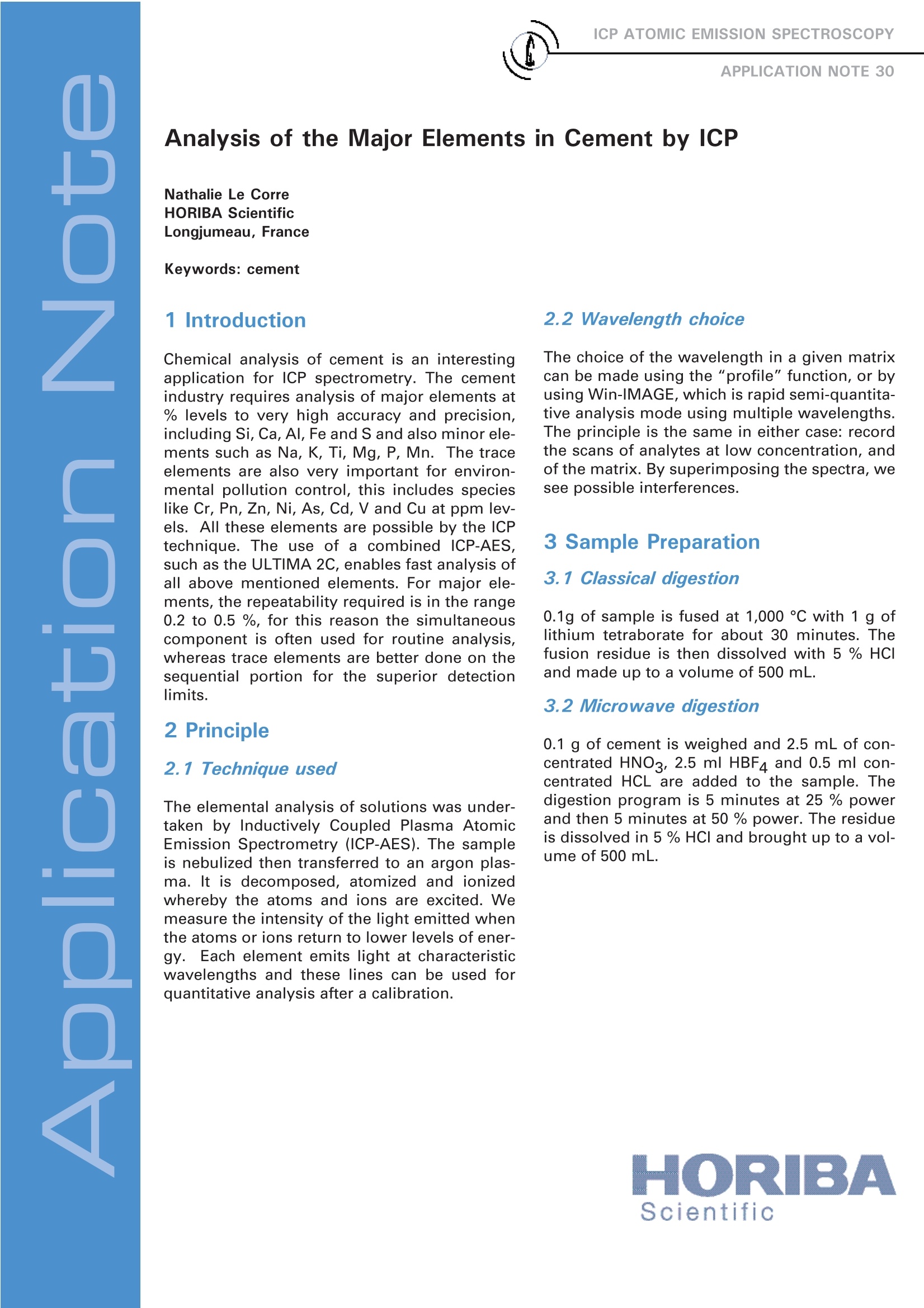
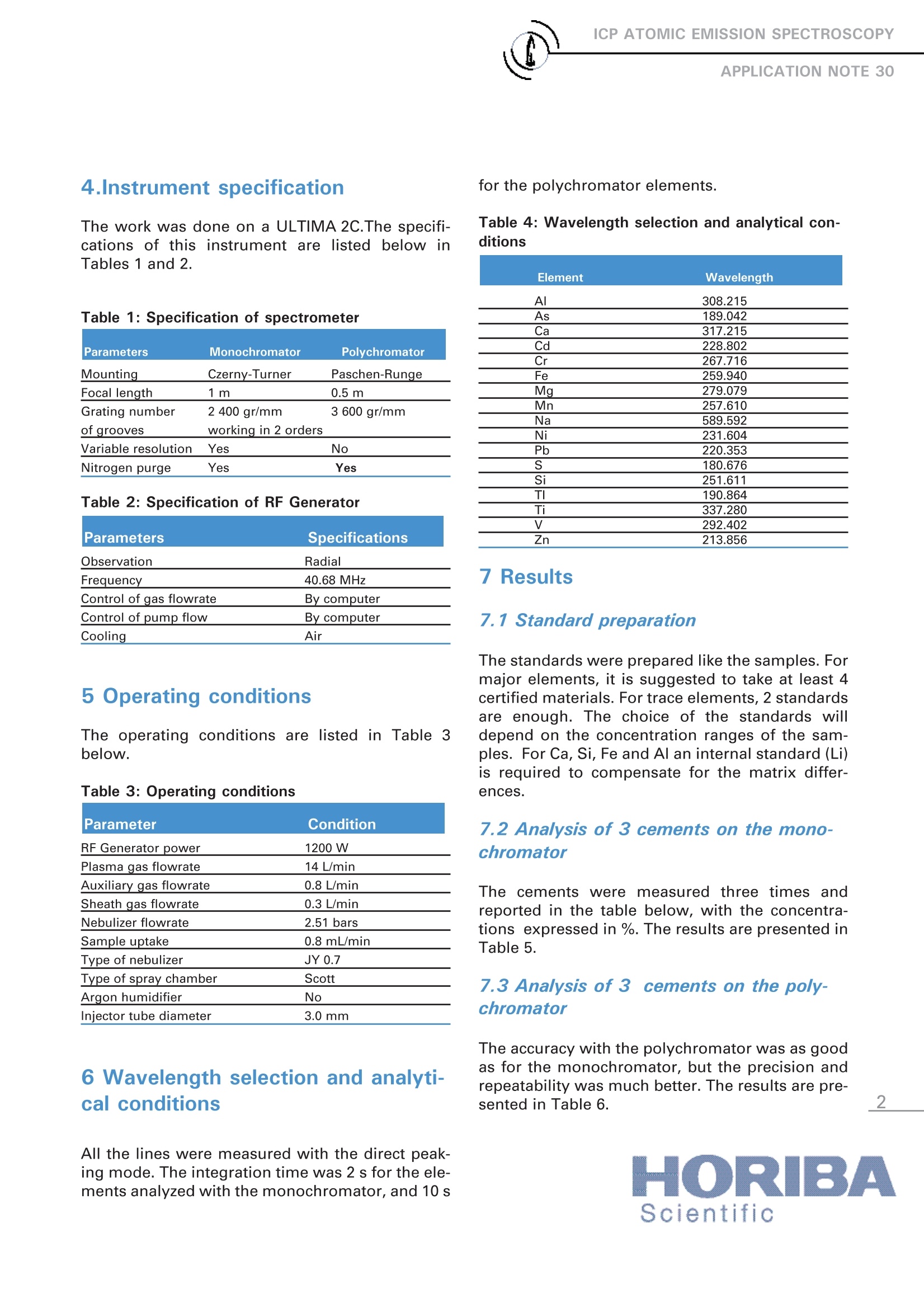
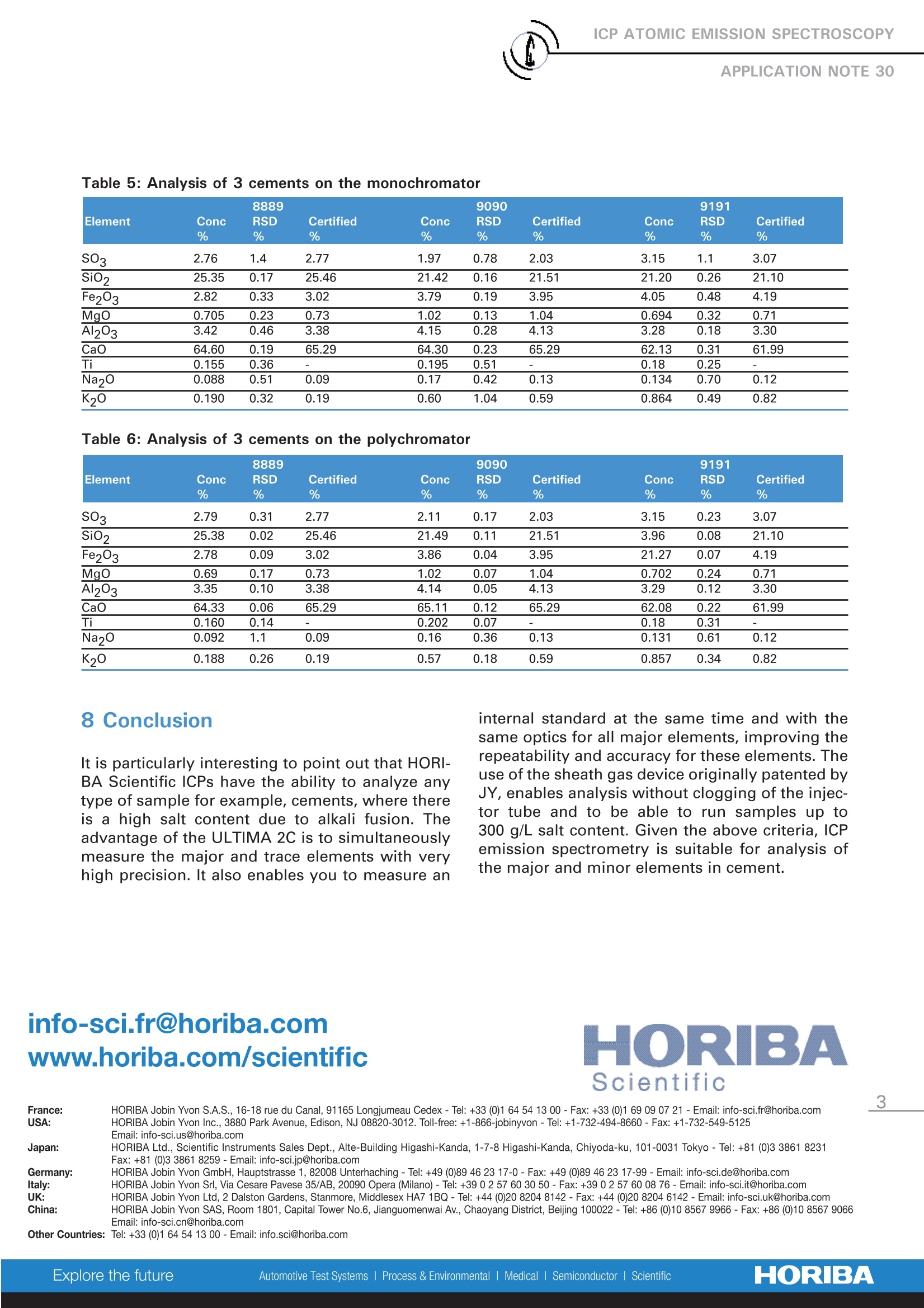
还剩1页未读,是否继续阅读?
HORIBA(中国)为您提供《水泥中Ca检测方案(ICP-AES)》,该方案主要用于水泥/混凝土中Ca检测,参考标准--,《水泥中Ca检测方案(ICP-AES)》用到的仪器有HORIBA Ultima Expert高性能ICP光谱仪
推荐专场
相关方案
更多
该厂商其他方案
更多









